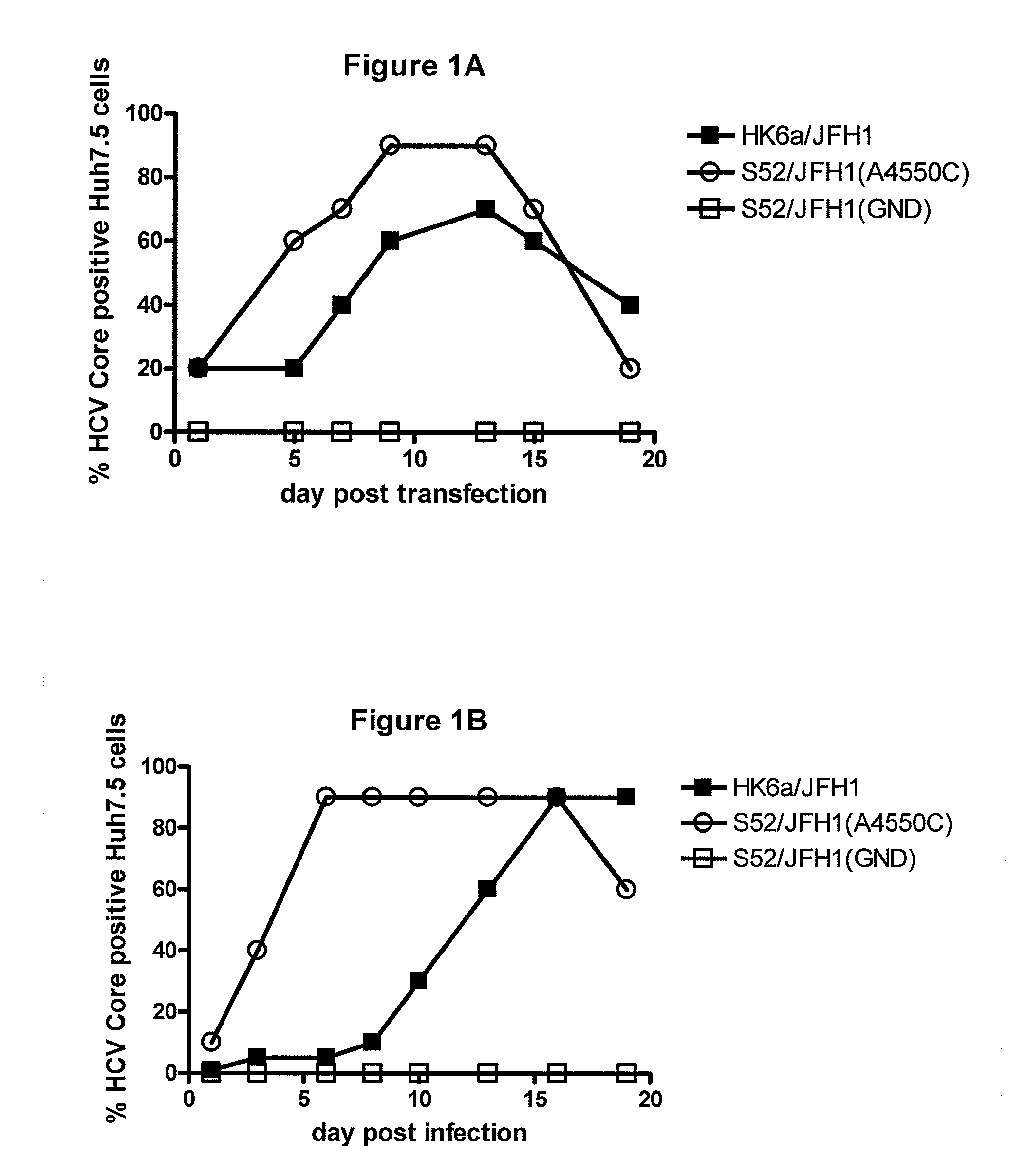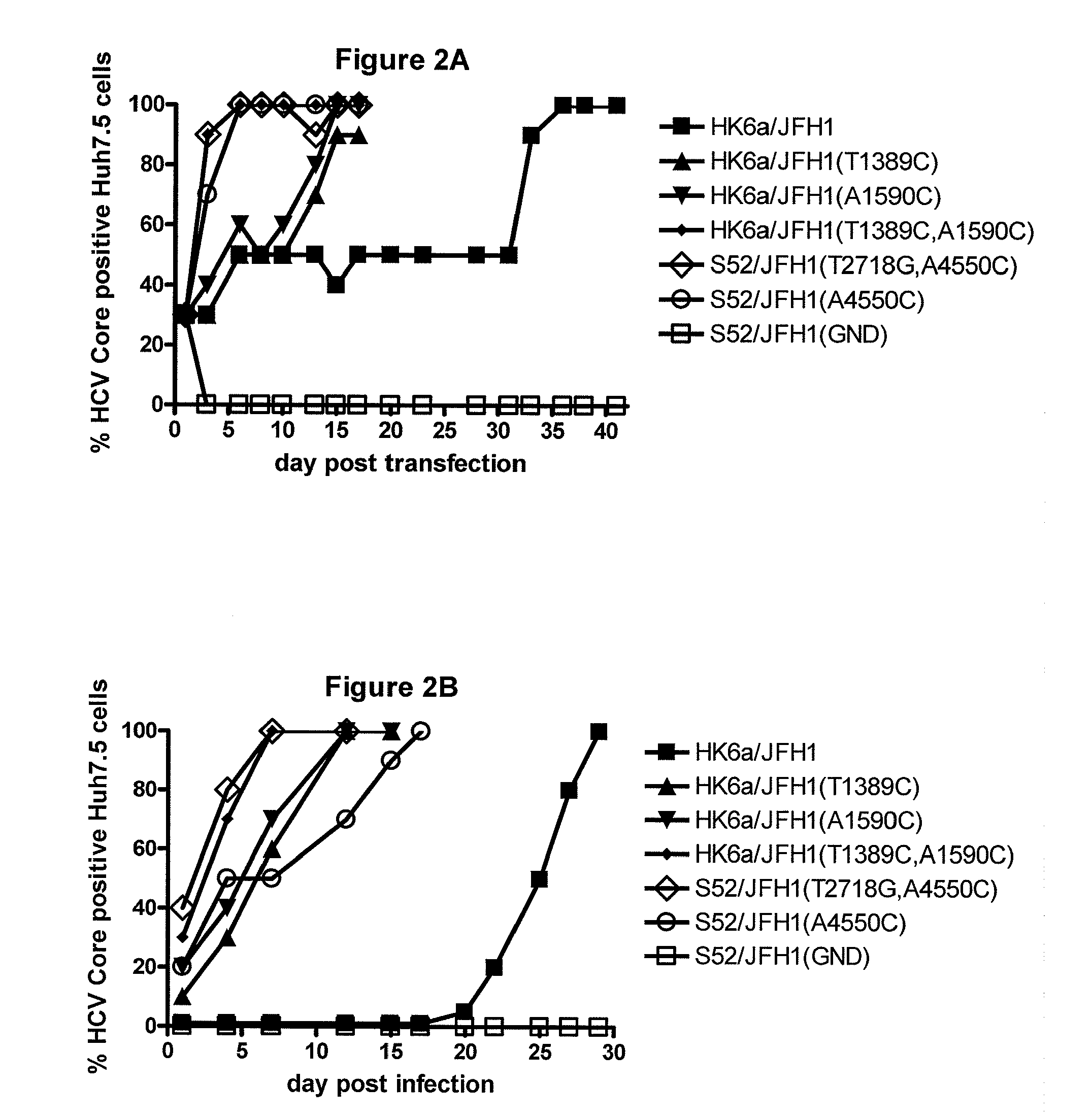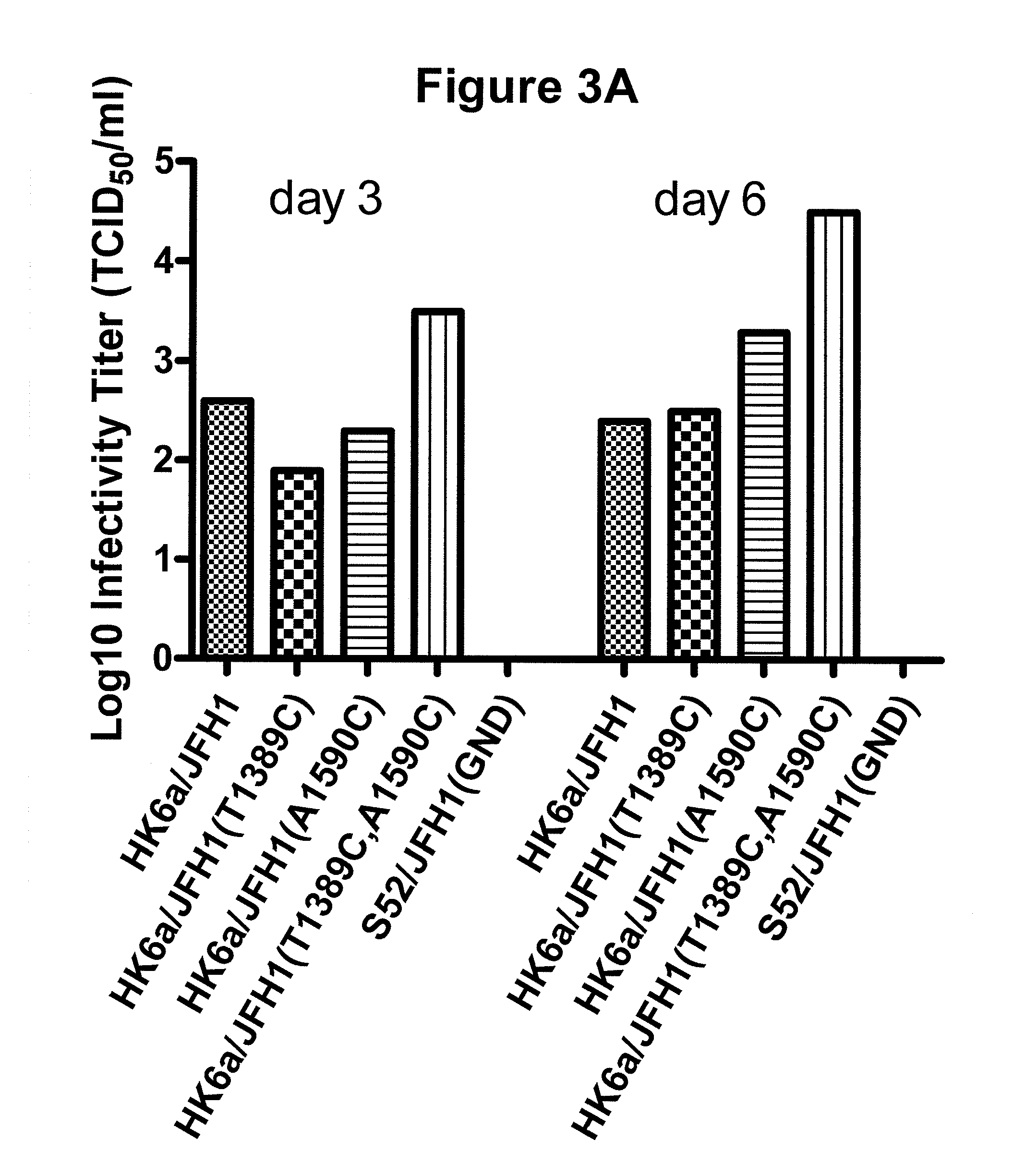Efficient cell culture system for hepatitis C virus genotype 6A
a cell culture system and hepatitis c virus technology, applied in the field of infectious recombinant hepatitis c genotype 6 viruses, can solve the problems of hcv research hampered, increased risk of liver cirrhosis, hepatocellular carcinoma, etc., and achieve the effect of enhancing potential
- Summary
- Abstract
- Description
- Claims
- Application Information
AI Technical Summary
Benefits of technology
Problems solved by technology
Method used
Image
Examples
example 1
Cell Culture Adaptation of Intergenotypic 6a / 2a Recombinant (Hk6a / JFH1)
[0251]In order to develop a cell culture system for HCV genotype 6 the present inventors developed the intergenotypic 6a / 2a recombinant pHK6a / JFH1, which contains (i) the 5′ UTR of the JFH1 isolate (nts 1-340) differing from the sequence provided for JFH1 (accession number AB047639) at one position (C301T); (ii) Core through NS2 of HK6a (nts 341-3436); and (iii) NS3 through 3′ UTR of JFH1 (nts 3437-9684).
[0252]After two independent transfections of Huh7.5 cells with RNA transcripts of pHK6a / JFH1, a delay of viral spread was observed (determined by the increase in the percentage of cells expressing HCV Core antigen) compared to the positive control virus S52 / JFH1(A4550C) (FIGS. 1A, 2A). Thus, HK6a / JFH1 spread to >50% of Huh7.5 cells after 9 and 33 days, respectively (FIGS. 1A, 2A). After one cell free passage of virus derived from the 1st transfection experiment (FIG. 1A) in naïve Huh7.5 cells (FIG. 1B), viral gen...
example 2
Reverse Genetics Analysis of Putative Adaptive Mutations
[0253]In order to prove that the identified mutations conferred cell culture adaptation, the present inventors constructed three HK6a / JFH1 recombinants containing either T1389C in E1, A1590C in E2 or a combination of both mutations. In a first transfection experiment, on day 6 after transfection, most cells in the HK6a / JFH1(T1389C, A1590C) and the positive control cultures had become HCV Core positive and showed infectivity titers of ˜104′5 TCID50 / ml. In contrast, HK6a / JFH1 viruses with the single mutations T1389C or A1590C first spread to infect most cells on day 15 when they showed infectivity titers of ˜103.5 TCID50 (FIG. 2A and FIG. 9). Sequencing of first passage (FIG. 2B) viral genomes revealed that only HK6a / JFH1(T1389C, A1590C) was genetically stable, whereas HK6a / JFH1(A1590C) acquired T1389C and HK6a / JFH1(T1389C) acquired A1590C as a 50 / 50 quasispecies with the original sequence and T1581G (coding for I414S) as a minor...
example 3
Infectivity and HCV RNA Titer Determined in HK6a / JFH1 Cultures
[0257]So far infectivity titers have been determined for cultures transfected with adapted and original HK6a / JFH1 (experiment shown in FIG. 2A). In the HK6a / JFH1(T1389C, A1590C) culture a peak titer of 104.5 TCID50 / ml (50% tissue culture infectious dose) was determined already on day 6 post transfection (FIG. 3A, FIG. 9). In addition, a HK6a / JFH1(T1389C, A1590C) virus stock showed an infectivity titer of 104′7 TCID50 / ml (data not shown). HCV RNA titers were determined on the 1st passage of HK6a / JFH1 (FIG. 1B) carried out following the 1st transfection experiment (FIG. 1A) and are shown in FIG. 3B. Peak HCV RNA titers were around 107.5 IU / ml on day 16 post infection.
[0258]Thus, peak infectivity and HCV RNA titers yielded in the HK6a / JFH1 system are comparable to the titers achieved with intergenotypic recombinants of the other major genotypes of HCV developed.
PUM
| Property | Measurement | Unit |
|---|---|---|
| temperature | aaaaa | aaaaa |
| size | aaaaa | aaaaa |
| polarity | aaaaa | aaaaa |
Abstract
Description
Claims
Application Information
 Login to View More
Login to View More - R&D
- Intellectual Property
- Life Sciences
- Materials
- Tech Scout
- Unparalleled Data Quality
- Higher Quality Content
- 60% Fewer Hallucinations
Browse by: Latest US Patents, China's latest patents, Technical Efficacy Thesaurus, Application Domain, Technology Topic, Popular Technical Reports.
© 2025 PatSnap. All rights reserved.Legal|Privacy policy|Modern Slavery Act Transparency Statement|Sitemap|About US| Contact US: help@patsnap.com



